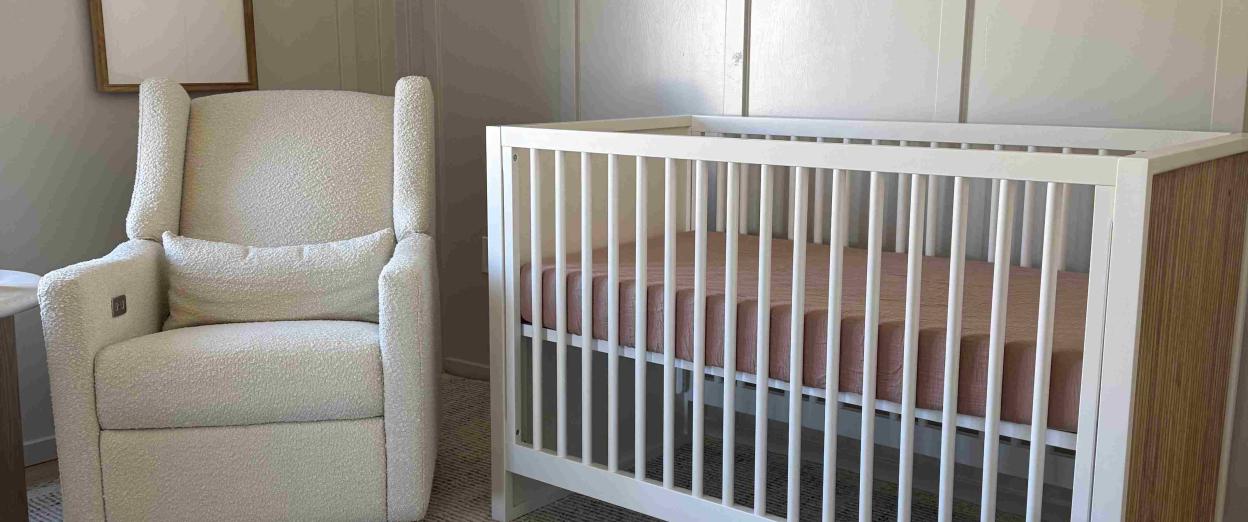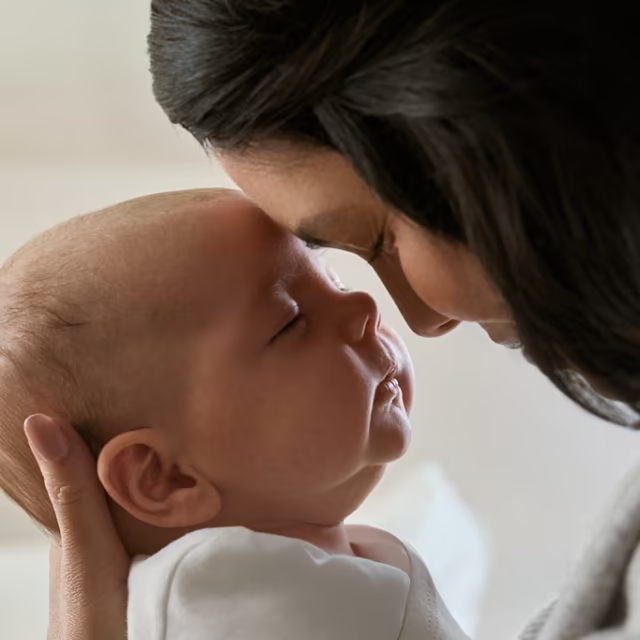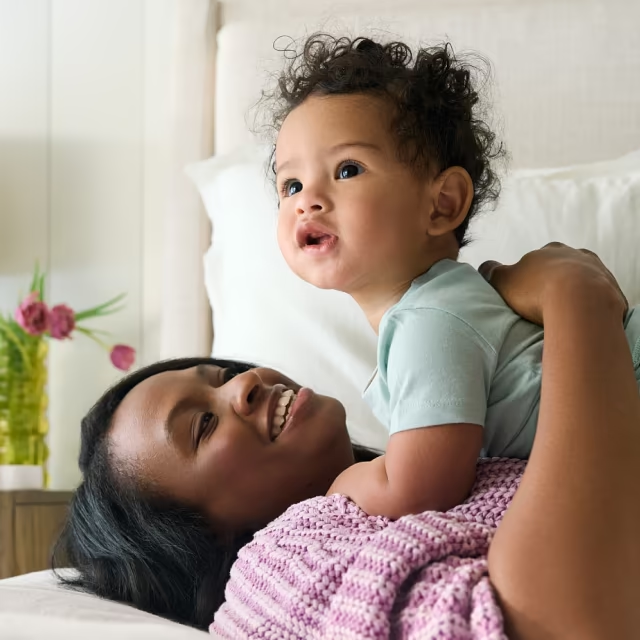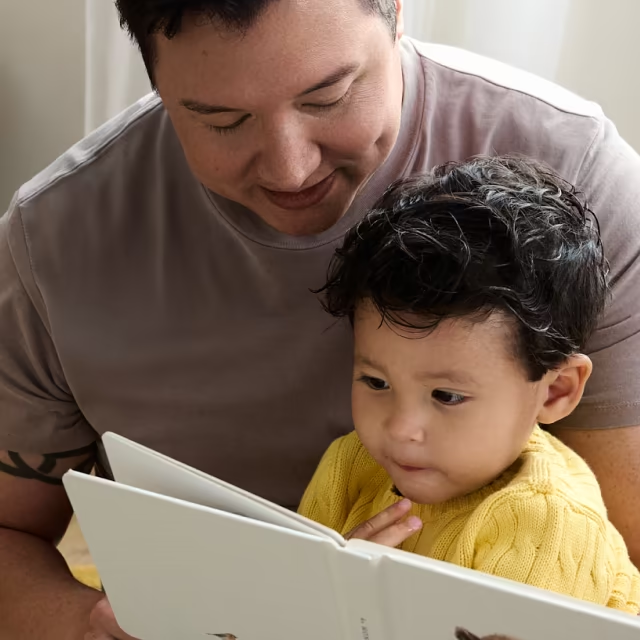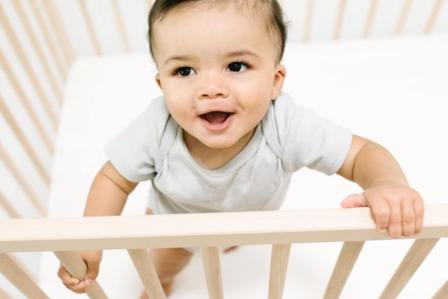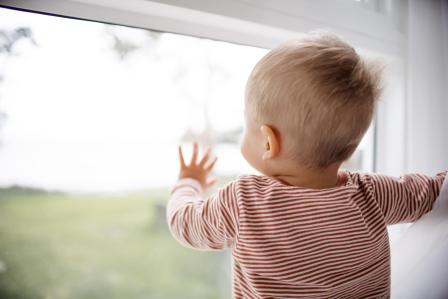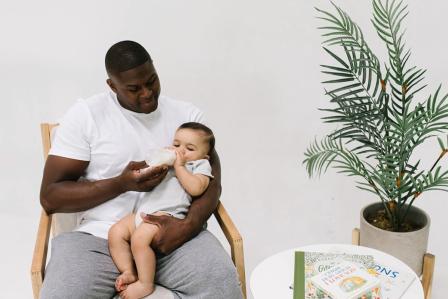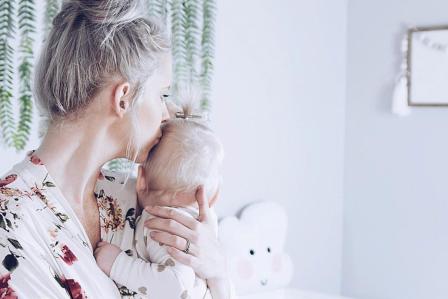Creating the ideal sleep environment is one part of having a great little sleeper. What does this look like? Well, the ideal sleep environment for your baby is both safe and conducive to sleep. Let me walk you through how to set up your baby’s sleep environment.
How to Create a Safe and Sleep-Friendly Space anchor
One of the most important parts of setting up your baby’s ideal sleep environment is ensuring that their sleep space is safe. A safe sleeping space means that your baby has(1):
A firm, flat sleep surface designed for infant sleep. A baby’s sleep space must be labeled as a crib, bassinet, portable crib, or play yard, the mattress must be designed for infant sleep (if your sleep space comes with a mattress, only use the mattress included), and it should keep the baby flat when sleeping.
A bare crib. Keep the sleep space free of blankets, pillows, bumpers, and stuffed animals to reduce the risk of suffocation. For safety, there should only be a fitted sheet (no mattress pads, sleep positioners, or any other products).
Their own space. A baby’s sleep space should be separate (not bed sharing with parents or a sibling).
For a more detailed checklist on safe sleep and setting up your baby’s sleep room, check out my blogs Safe Sleep Checklist and Nursery Checklist.
Using Light and Darkness for Baby’s Sleepanchor
Light and darkness play a crucial role in regulating your baby’s sleep patterns. Here’s how to use light and dark to help your baby sleep better:
Natural light for awake time. Exposing your baby to natural light during awake time, either by going outside or opening up the curtains, can help regulate your baby’s circadian rhythm (the body’s internal clock that tells us when it’s time to sleep vs. be awake).(2)
Darkness for naps and nighttime sleep. Especially as babies get older, light can be really stimulating, making it hard to fall asleep and stay asleep. On the other hand, a dark room signals to your baby that it’s time to sleep.
Night lights and sleep. Most little ones do not need a night light for sleep until they’re at least two years old. If you need light for nighttime feedings or diaper changes, use a dim and/or red-colored light, as this is the least disruptive to sleep.(3) Be sure to turn the night light off when you’re finished.
The Role of Sound in Baby Sleepanchor
Sound machines are a great tool for baby sleep. Research shows us that using a sound machine on a constant low hum can:
When using a sound machine for your baby’s sleep, here are the main ways to make sure the sound machine is both effective and safe:
Consistent and continuous noise. Choose a setting that has a consistent sound (think: pink/white/brown/green noise instead of rainstorms or crashing ocean waves). You’ll also want to skip the timer function, as we want continuous sound while your baby is sleeping. Too much variation or a sound machine that turns off can cause your baby to wake.
Volume and placement. Keep the sound machine at a safe volume (You want to be able to hold a conversation without raising your voice.) and place it at least 7 feet from your baby’s sleep space.
Use only during sleep times. Sound machines should primarily be used during naps or for overnight sleep. During awake time, it’s important that your little one is hearing language and all of the sounds in their environment!
In my Sound Machines and White Noise for Baby Sleep blog, I’ll walk you through the current research and more in-depth explanations of how and when to use a sound machine.
The Ideal Room Temperature for Sleepanchor
The AAP recommends a temperature of around 68 - 72℉ with a ceiling fan running as the best for babies.
At the same time, the ideal room temperature may vary some for different homes, families, and babies. For example, I live in Arizona. In the summer, it’s not uncommon for our home to be around 77℉, but everyone in our family still feels comfortable. For some families who live in colder climates, that might seem too warm!
Rather than focus on room temperature alone, consider:
How are you dressed? Think about how you need to be dressed to be comfortable to sleep. For the temperature of your house, do you need your pajamas and a comforter? Then your baby will likely need their pajamas and their swaddle or sleep sack. The AAP recommends that babies be dressed in no more than one additional layer of clothing than an adult would need to be comfortable.
Does your baby appear comfortable? Feel your baby’s core (neck, chest, tummy, and back). Instead of using your baby's hands or feet as indicators, feel their core. Does your baby's core feel warm, but not sweaty? Not cold? Okay, you've nailed it!
The b.e.s.t. swaddle was designed with temperature flexibility in mind. The 3 swaddling options allow you to customize your baby’s swaddle to make sure they’re dressed comfortably for sleep. If you are in a warmer climate, you’ll love the breezy option, while in a cooler climate, your baby may do best in the breakout-proof option.
I want you to feel confident in how you’re dressing your baby for sleep because this is a part of practicing safe sleep. If you want more information, read my blog all about How to Dress Your Baby for Sleep.
References
7 Sources
American Academy of Pediatrics. (2022). New safe sleep recommendations can help pediatricians guide families
Yates. (2018). The Long-Term Effects of Light Exposure on Establishment of Newborn Circadian Rhythm
Figuerio. (2010). The Effects of Red and Blue Lights on Circadian Variations in Cortisol, Alpha Amylase, and Melatonin.
Sezici and Yigit. (2017). Comparison between swinging and playing of white noise among colicky babies: A paired randomised controlled trial
Spencer, Moran, and Talbert. (1989). [White Noise and Sleep Induction](White Noise and Sleep Induction)
American Academy of Pediatrics. (2023). Preventing Excessive Noise Exposure in Infants, Children, and Adolescents
Healthy Children, American Academy of Pediatrics. (2023). How to Keep Your Sleeping Baby Safe: AAP Policy Explained
Keep in mind that the information and content on this blog is for informational purposes and should not be considered medical advice. If you have questions about your child, please reach out to your doctor.

